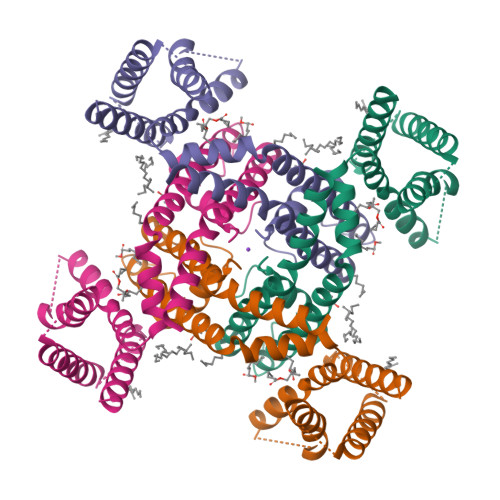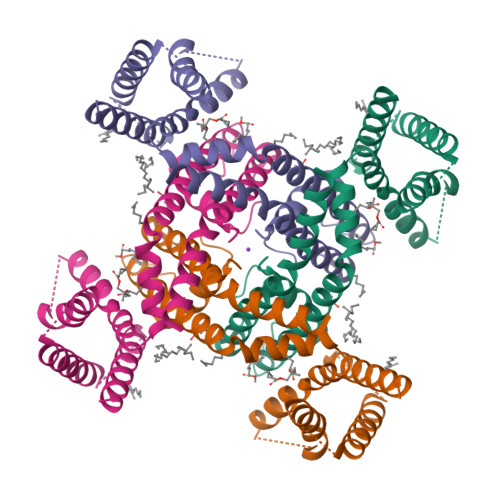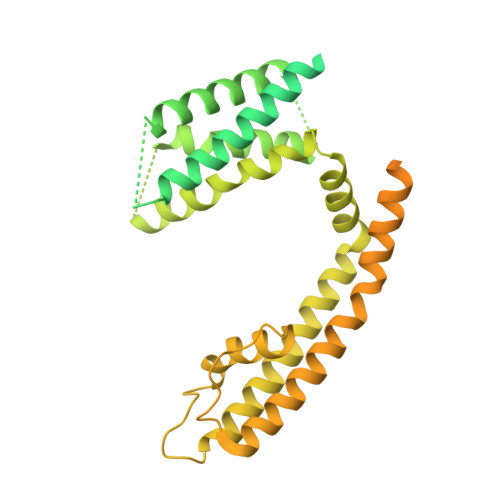Eukaryotic Kv channel Shaker inactivates through selectivity filter dilation rather than collapse.
Stix, R., Tan, X.F., Bae, C., Fernandez-Marino, A.I., Swartz, K.J., Faraldo-Gomez, J.D.(2023) Sci Adv 9: eadj5539-eadj5539
- PubMed: 38064553
- DOI: https://doi.org/10.1126/sciadv.adj5539
- Primary Citation of Related Structures:
8TEO - PubMed Abstract:
Eukaryotic voltage-gated K + channels have been extensively studied, but the structural bases for some of their most salient functional features remain to be established. C-type inactivation, for example, is an auto-inhibitory mechanism that confers temporal resolution to their signal-firing activity. In a recent breakthrough, studies of a mutant of Shaker that is prone to inactivate indicated that this process entails a dilation of the selectivity filter, the narrowest part of the ion conduction pathway. Here, we report an atomic-resolution cryo-electron microscopy structure that demonstrates that the wild-type channel can also adopt this dilated state. All-atom simulations corroborate this conformation is congruent with the electrophysiological characteristics of the C-type inactivated state, namely, residual K + conductance and altered ion specificity, and help rationalize why inactivation is accelerated or impeded by certain mutations. In summary, this study establishes the molecular basis for an important self-regulatory mechanism in eukaryotic K + channels, laying a solid foundation for further studies.
Organizational Affiliation:
Theoretical Molecular Biophysics Laboratory, National Heart, Lung and Blood Institute, National Institutes of Health, Bethesda, MD 20892, USA.


















